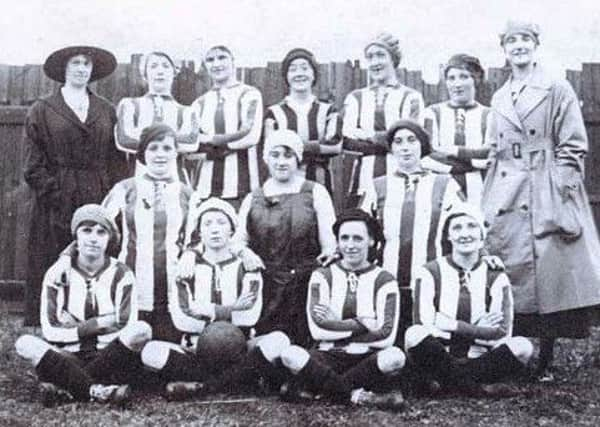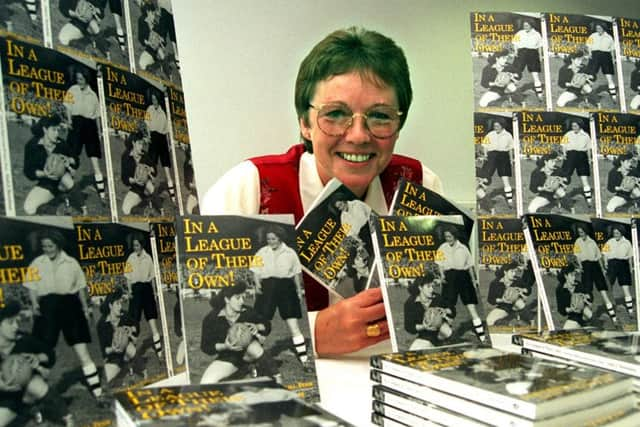When women's football was banned


In 1914, as a generation of young men signed up to serve king and country, so too did the women who were left behind, as hundreds of thousands took on traditional male roles previously considered too dangerous for women.
The most familiar image of these was the munitions girl, and as the female workers formed strong bonds on the factory floor, their friendships spilled over on to the playing fields during their breaks.
Advertisement
Hide AdAdvertisement
Hide AdInformal kickabouts became a popular pastime, and they were heartily encouraged by the factory management who deemed them good for health, well-being and morale.


As the war progressed, so did the women’s game, and football teams emerged from the munitions factories.
Initially, the novelty of women playing football was used to raise money for war charities, with crowds flocking to see the so-called ‘munitionettes’ take on teams of injured soldiers and women from other towns and villages.
The most famous of the wartime teams was Dick, Kerr Ladies FC, from Preston.
Advertisement
Hide AdAdvertisement
Hide AdFounded in 1917, their first match drew a crowd of 10,000, and by 1920, a Boxing Day match against St Helen’s Ladies was watched by 53,000 spectators at Goodison Park, with another 14,000 locked outside the ground trying to get in.


However, this so-called ‘golden era’ of women’s football was to be short-lived.
As the men arrived back from the front to take up their old jobs, women were expected to return to domestic life.
Then on December 5, 1921, the FA published a report that offered three key reasons why women’s football matches should henceforth be banned from taking place on their pitches.
Advertisement
Hide AdAdvertisement
Hide AdFirstly, it said that football was “quite unsuitable for females.”
Secondly, there were complaints about “the conditions under which some of these matches have been arranged and played.”
And finally, the council suggested that “an excessive proportion of the receipts are absorbed in expenses and an inadequate percentage devoted to charitable objects.”
As a result the FA called on clubs belonging to the associations “to refuse the use of their grounds for such matches”, and the subsequent ban changed the course of the women’s game forever.
Advertisement
Hide AdAdvertisement
Hide AdIt was not until 1971 that the FA finally lifted the ban, in the same year that UEFA recommended the women’s game should be taken under the control of the national associations in each country.
This move signalled the start of a female football revival, not only in Britain but around the world.
The first official European Championship was held in Sweden in 1984 with the inaugural World Cup taking place in 1991.
Fast forward to today and women’s football is a global phenomenon. At the 2012 Olympic final at Wembley Stadium between the USA and Japan, a record-breaking crowd of more than 83,000 was in attendance.
Advertisement
Hide AdAdvertisement
Hide AdRecently, the England women’s team also secured its biggest ever crowd at Wembley of 40,181 in a recent friendly against Germany.
In Tuesday night’s documentary ‘When Football Banned Women’ presenter Clare Balding investigated why it has taken the current generation 46 years to achieve something remotely close to the success of the First World War footballers.
She also asked why there continues to be a massive gap between women’s and men’s football and how it can be bridged in the future.